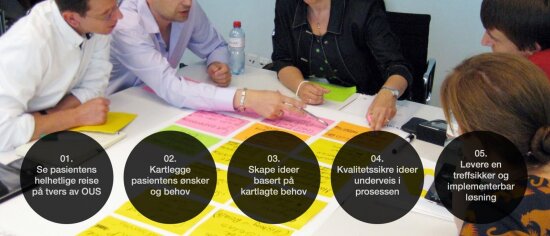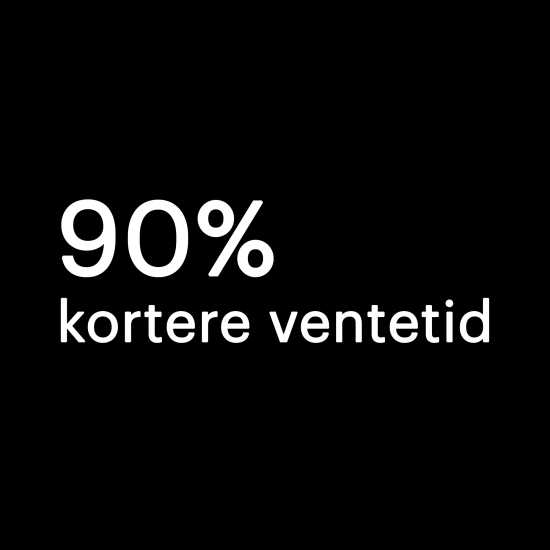When the hospital was in the process of developing a new strategy plan for 2013-2018, a DIP project was launched, aimed at creating a more effective and integral process for breast cancer patients. Breast cancer is the most common form of cancer in women around the world and 1 in 8 women will be diagnosed with breast cancer during her lifetime. It is the second leading cause of death in women, but tumours that are discovered early can be treated.
Challenge
Women at a high risk of developing breast cancer had to wait up to three months for an appointment at the Oslo University Hospital to undergo an exam and receive a diagnosis. Patients experienced this process as ineffective, outdated and with no regard for the fact that having to wait so long for an answer puts them under constant stress.
Process
Thanks to DIP funding, the Oslo University Hospital was able to hire Designit to develop a new system that would reduce the waiting time by 75 percent. The project focused on the entire patient journey and included all steps undertaken by breast cancer patients, from discovery of the lump to diagnosis, treatment and follow-up. The designers started by mapping out the current situation from both the patient and hospital perspectives. They organised workshops and interviews with employees from various departments, as well as with patients.

They identified a number of problems with breast cancer screening:
- Noise and interruptions prevent professionals from focusing on their tasks.
- It takes a long time to analyse images from examinations.
- Patients have a negative first impression of the hospital.
- There is a lack of information during the waiting period.
- Patients take responsibility for their own treatment and choose other alternatives.
- The experience becomes a positive one once the patient receives the actual diagnosis.
This study revealed a key insight that was decisive for the ultimate result:
“For women, they become a patient the moment they discover a lump in their breast, while the hospital does not consider them a patient until they have been diagnosed with cancer.”
The designers then incorporated this insight into the next phase, which entailed idea workshops with hospital employees. The results were then compiled into concepts, which in turn were tested among staff and patients.

Photo: Ukjent
Result
The result was ‘The new breast diagnostic centre’, which promised to shift the focus from the hospital towards the patient instead of the other way around. This new system ended up surpassing all expectations by reducing the waiting period by a whopping 90%. It was put into operation in 2013 and all patients referred to the Oslo University Hospital now go through this system. The average waiting time for a diagnosis is currently seven days, compared to the previous 84 days.

